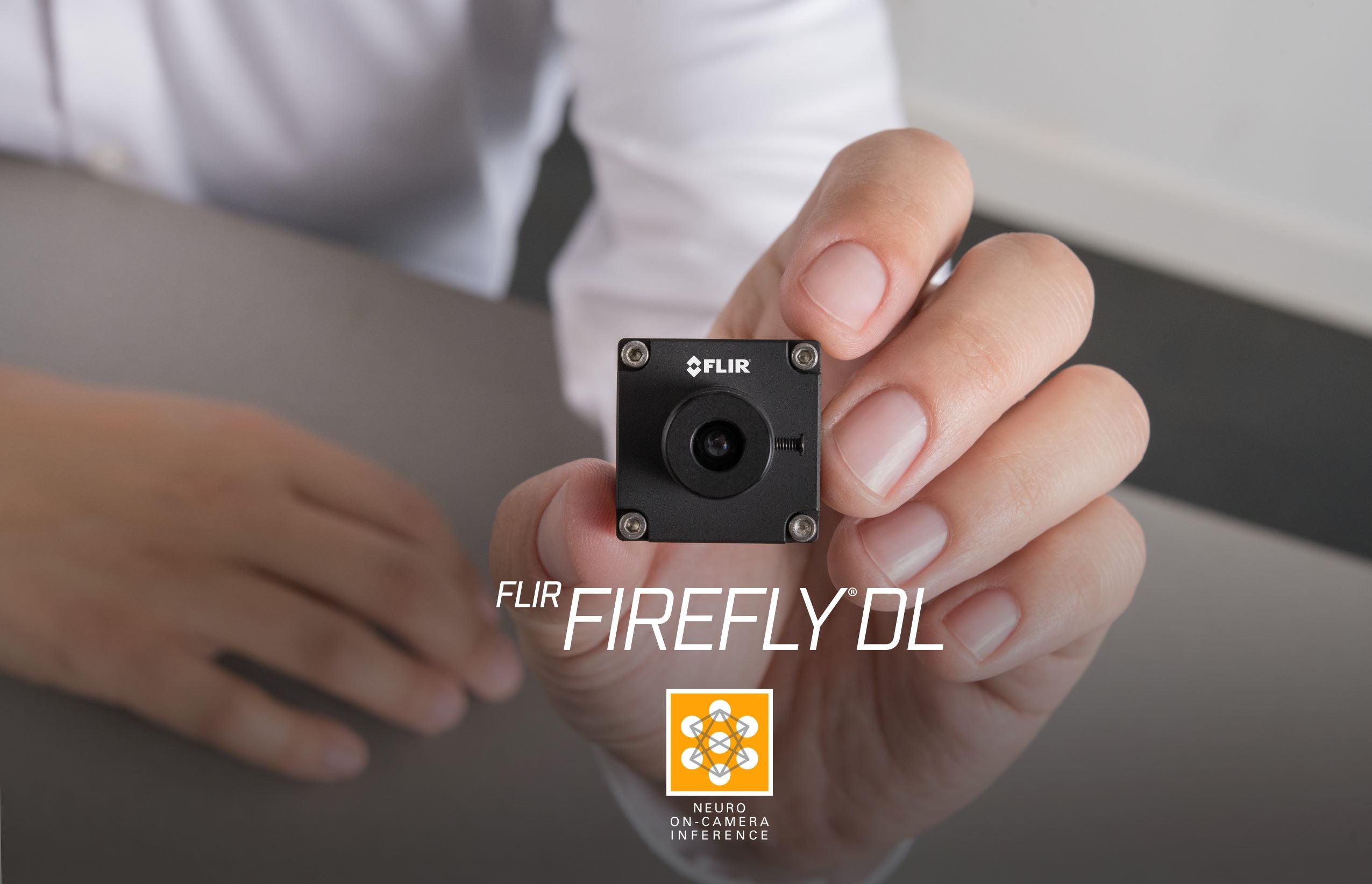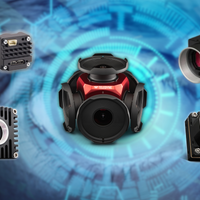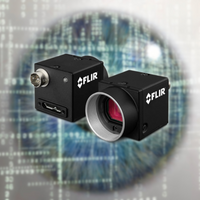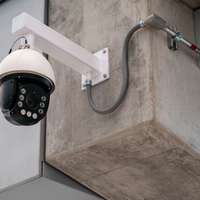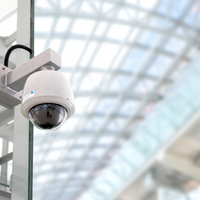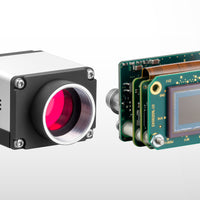Teledyne FLIR Machine Vision cameras, with their exceptional capabilities in capturing and processing high-quality images, stand as vital tools for engineers and developers across various sectors. Whether it's enhancing the precision of fruit inspection machines, paving the way for the robotics of tomorrow, or deploying sophisticated systems for urban surveying, FLIR's industrial visible light cameras offer the technological edge needed to push developmental boundaries.
These cameras are distinguished by their incorporation of the most advanced sensors available, alongside a suite of powerful features designed for both automated and meticulously manual control over image capture and on-camera pre-processing. This fusion of cutting-edge technology ensures that FLIR cameras are not just components but catalysts in accelerating the pace of innovation and efficiency in machine vision and beyond.
Teledyne FLIR Machine Vision
Machine vision technology, although not always visible to the naked eye, plays a crucial role in the modern world, especially in the world of mass production. From the food on our tables to the semiconductors powering our devices and the textiles in our clothing, machine vision is the unsung hero ensuring the quality and reliability of products across various industries. At its core, machine vision embodies the capability of a system, such as a computer, to "see." This technology allows systems to analyze captured images and make decisions or classifications based on what they "observe."
FLIR, a pioneer in the field of industrial imaging, leverages machine vision to enable automation and enhance product quality inspection. Their cameras are engineered to operate with unparalleled reliability, enduring the rigors of continuous operation—even in environments beset by constant vibrations.
How Machine Vision Works
The process begins with the camera triggering image capture in response to external signals. These cameras are adept at sending signals to coordinate with lights or even other cameras, ensuring that image capture is synchronized perfectly with the necessary actions.
Following capture, image analysis software takes over, analyzing the images to trigger subsequent actions in machinery. This can range from rejecting a defective part, sorting packages, analyzing blood samples, to guiding robots through complex tasks.
Machine vision cameras boast an array of features tailored to create and manipulate images for specific outcomes. Among these features are:
- The capability to focus on a narrow field of view, disregarding irrelevant portions of the scene.
- Automatic color correction to ensure accuracy in image analysis.
- Timestamping for synchronizing images with readings from other sensors.
- The ability to synchronize image capture with external hardware signals, ensuring coordinated operation across devices.
- Facilities for synchronizing multiple cameras to work in unison.
- Precise camera configuration control through specialized software development kits.
- Easy integration with third-party machine vision software, enhancing flexibility and usability.
Advancing with Deep Learning
Machine vision not only converts visual information into actionable decisions but also opens the door to the advanced capabilities of deep learning. By emulating the human brain's data processing methods, deep learning uses neural networks to differentiate between significant anomalies and natural variances. This results in systems capable of analyzing more complex patterns, accelerating development, and ultimately delivering products of higher quality and productivity.
Traditionally, deep learning systems have relied on separate cameras and computing systems. However, FLIR's innovative Neuro Technology allows for the deployment of trained neural networks directly to the camera. This breakthrough reduces both system cost and complexity by enabling on-camera decision-making, often eliminating the need for a host PC. Applications for Neuro Technology are vast, ranging from product classification and sorting to translating sign language, detecting potential collision hazards for drones, or monitoring the alertness of pilots and drivers.
Area Scan Cameras for Diverse Applications
Teledyne FLIR’s area scan cameras stand at the forefront of industrial imaging, offering a combination of advanced sensors and powerful features for both automatic and manual control over image capture and on-camera pre-processing. These capabilities make FLIR cameras instrumental in designing machines for an array of applications, including but not limited to fruit inspection, robotic system development, and urban surveying systems.
Spherical Video and Panoramic Imaging
A notable application of FLIR technology is in creating spherical video realities. FLIR’s Ladybug systems are engineered to perform image acquisition, processing, stitching, and correction seamlessly, producing high-resolution digital spherical and panoramic videos.
This technology finds its use in HD mapping, roadside inspection, panoramic street image production for street view applications, road surveying, heritage scanning, and building management, to name a few. The integration of multiple camera images into full-resolution spherical videos offers an unprecedented level of visual data quality and flexibility, ideal for applications requiring video image synchronization.
Next-Generation Vision Solutions
Teledyne FLIR is a global leader in digital imaging components for machine vision, showcasing an impressive portfolio of 2D area scan cameras, spherical, and embedded vision solutions. Their technology powers thousands of machine vision systems worldwide, across a multitude of industries.
High-Performance Embedded Vision
The Teledyne Quartet Carrier Board, designed for the NVIDIA Jetson TX2, exemplifies FLIR’s innovation in embedded vision solutions. It allows for easy integration of up to four USB3 board-level cameras, leveraging the NVIDIA Jetson's deep learning hardware accelerator. This setup enables a comprehensive decision-making system on a compact board, optimizing size and cost by reducing the need for peripheral hardware.
Featured Products
Dragonfly® S USB3
The Dragonfly® S is a testament to Teledyne FLIR's commitment to speed, development, and deployment in various industries. Its modular, compact design is perfect for at-scale manufacturing and multi-camera systems, supporting a wide range of applications from biometrics to 3D scanning and automated optical inspection.
Forge 5GigE
The Forge camera platform is designed with OEMs in mind, offering flexible link speeds and the capability to control data transfer to the host beyond 5GigE performance. It's an ideal solution for building robust systems faster and provides an easy upgrade path from 1GigE systems.
Firefly DL
The Firefly DL camera integrates deep learning capabilities directly on the camera, allowing for complex decision-making processes to be executed without a host PC. This small, lightweight camera is perfect for embedding into various systems, making it a revolutionary tool for improving productivity and product quality through on-camera deep learning.
Conclusion
Using FLIR cameras, industries all over the world are seeing big improvements in how things are made and how efficient they are. This is changing the game in automation, showing us new ways to do things we hadn't thought possible before.
We're at the start of something big, where FLIR is leading the charge to make machine vision and deep learning even better. They're not just looking to make small improvements; they're aiming to change the future so that machines can understand and interact with the world in ways we used to only dream about. With FLIR's vision technology, we're looking forward to a future filled with amazing possibilities and new breakthroughs.

